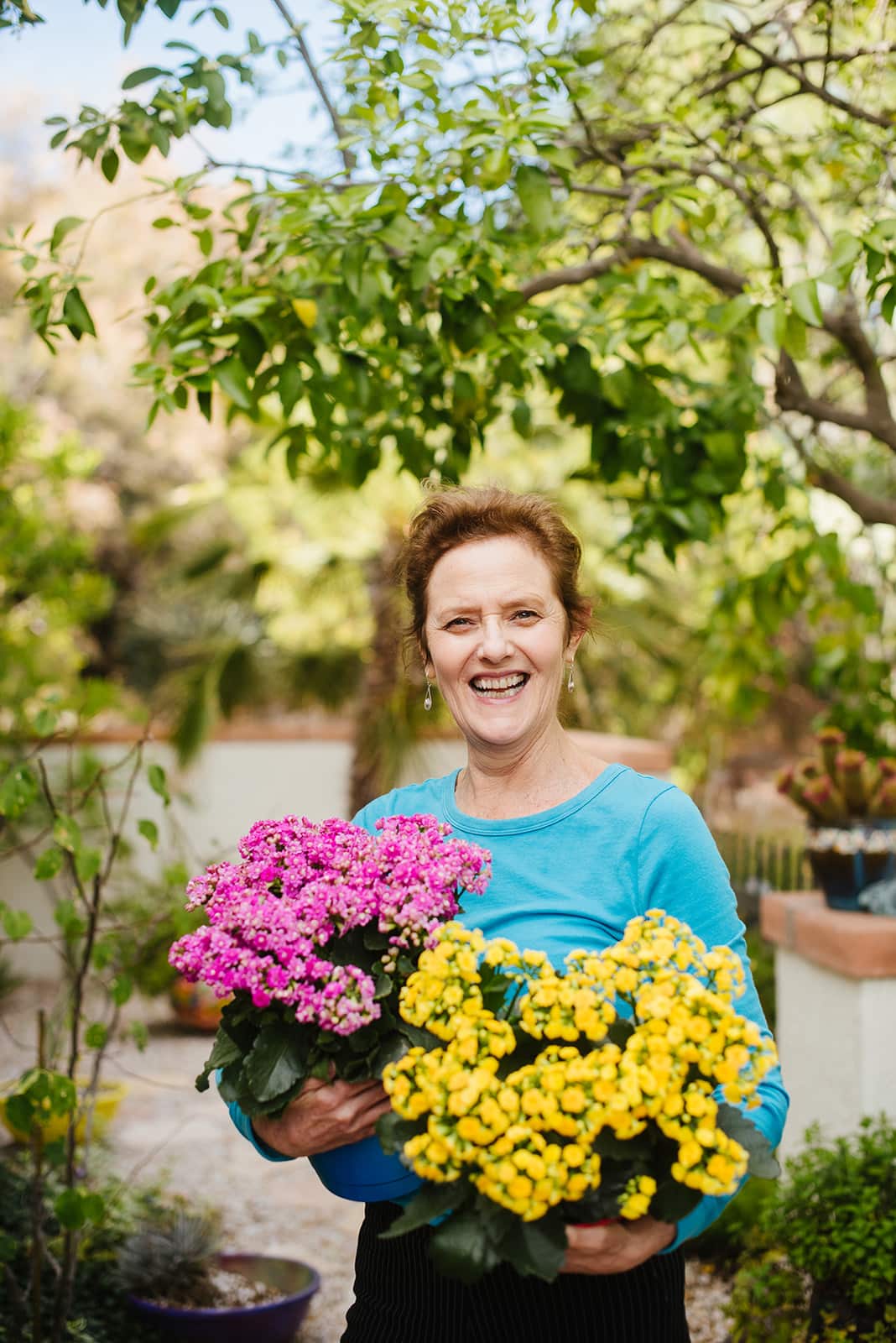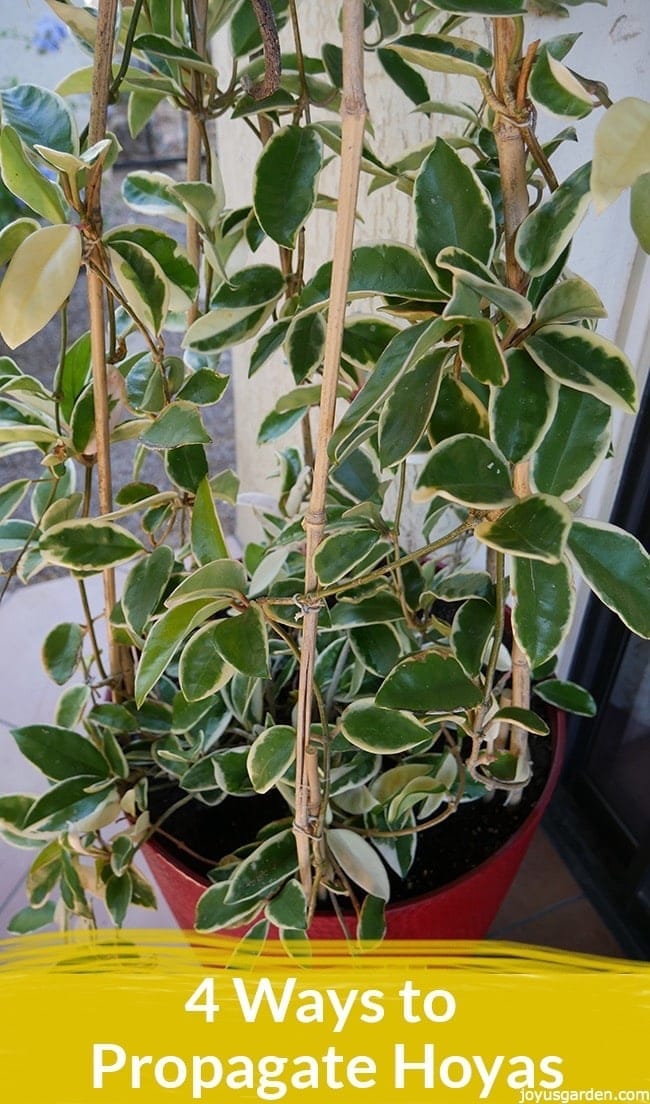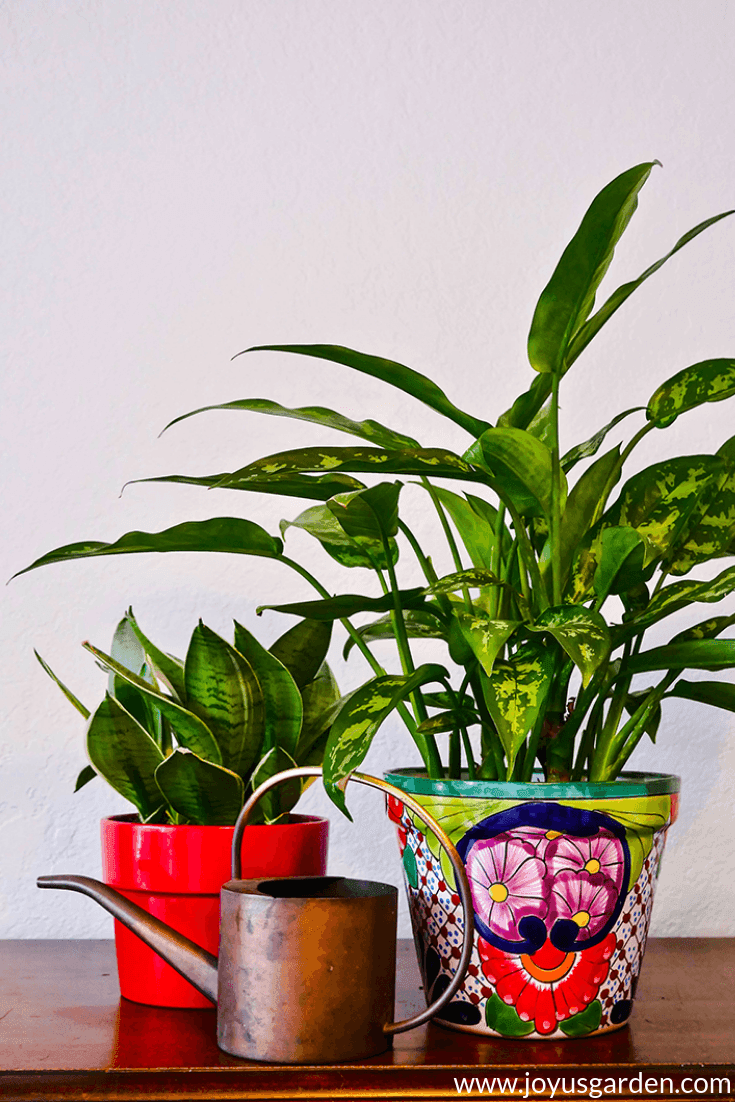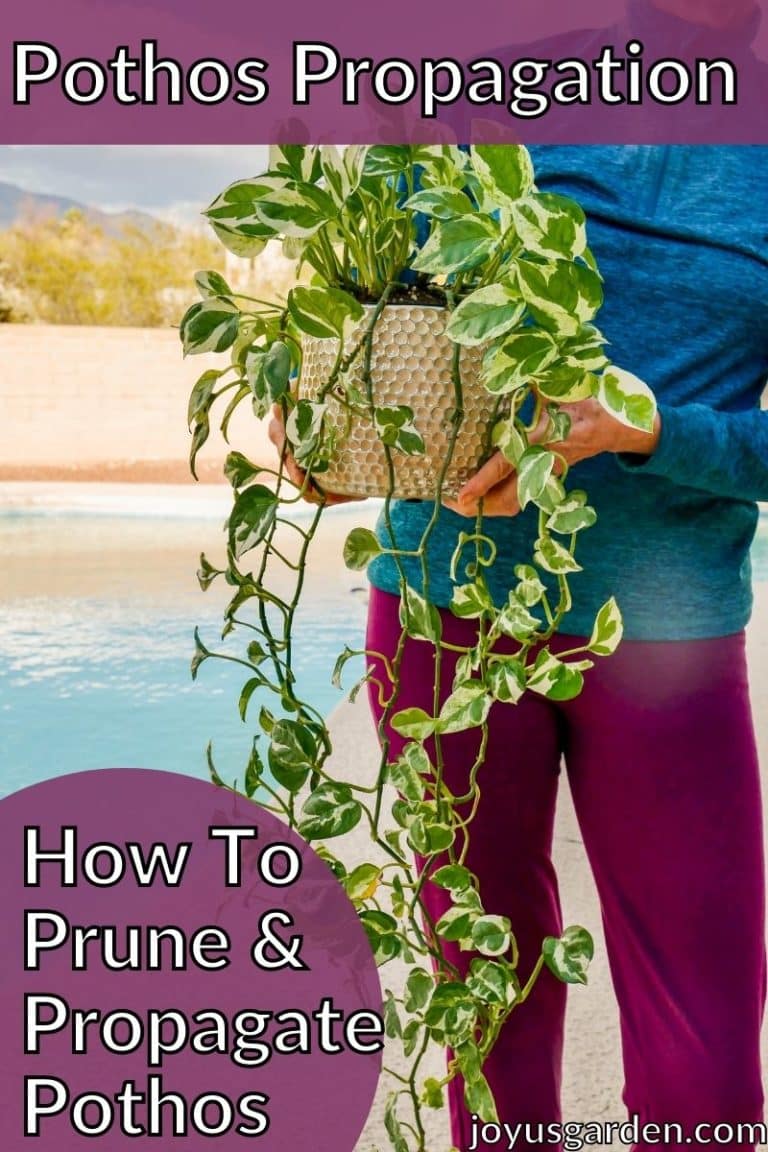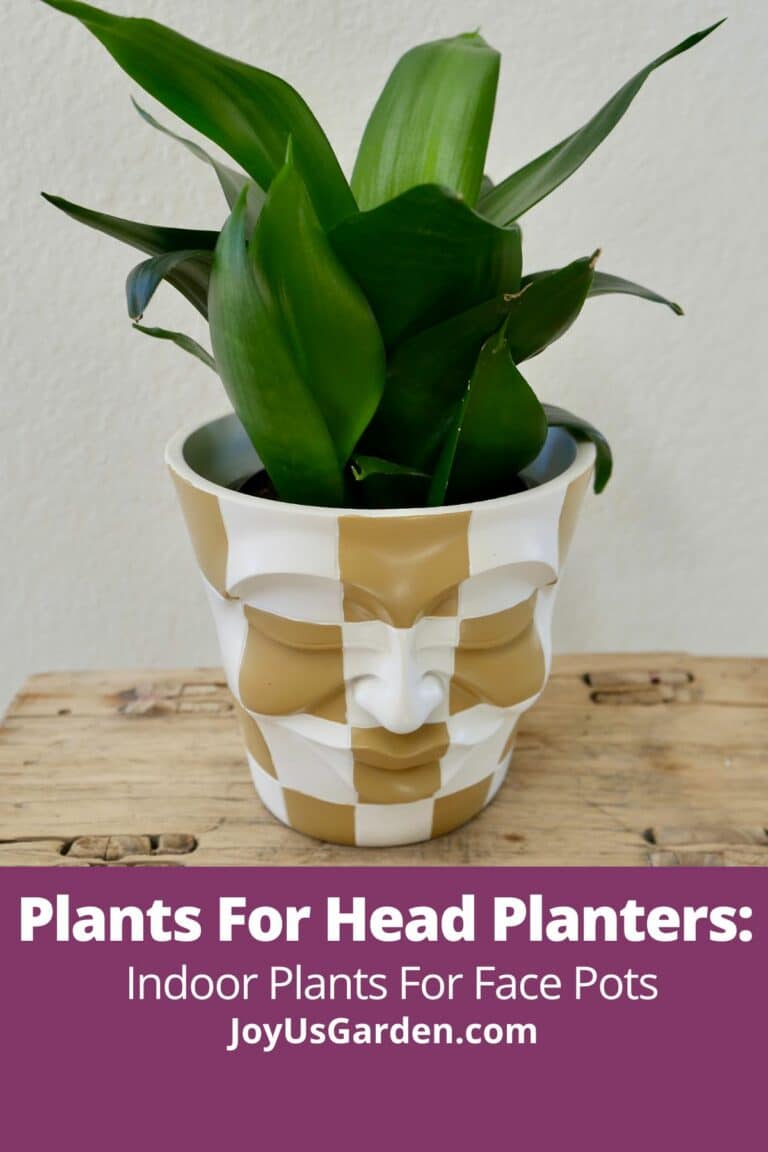Calandiva Care & Growing Tips
Chances are, you’re already familiar with the popular flowering plant Kalanchoe blossfeldiana. Calandivas are a cultivar (variety) of Kalanchoe blossfeldiana) and are commonly sold just with that single name, without the Kalanchoe prefix. That’s why I wanted to focus entirely on Calandiva care here, in case you’re searching for that.
The blossfeldiana is also called the Florist Kalanchoe or Flaming Katy. They’ve been around for a while but the Calandiva was first introduced around 2003. This cheery blooming houseplant has a nice, long bloom time which lasts about 6 to 8 weeks.
Calandivas were bred to grow with larger, double flowers instead of single flowers and are often called the Rosebud Kalanchoe. You can purchase them in a wide array of vibrant colors. And the foliage was bred to be larger and more attractive too.
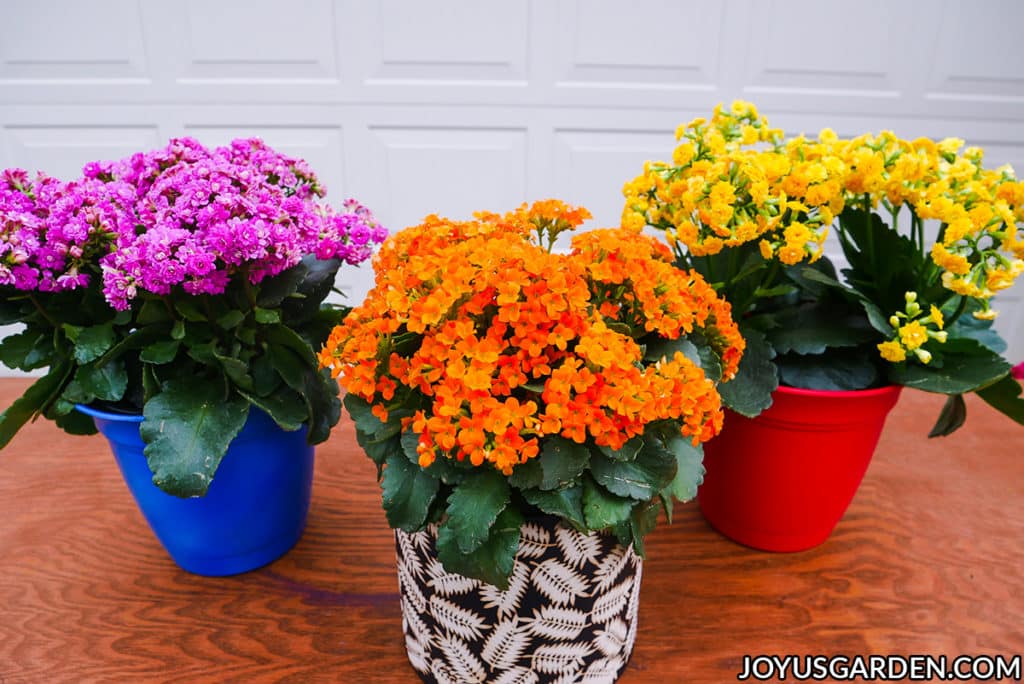
They make any space look more bright and colorful. Pink, red, yellow, and orange, just to name a few. They’re also sold around the holidays when you can more readily find them in red and white.
Most people treat them as a one-time blooming plant because it is a little bit tricky to get them to flower again. I’ll share more details on how to get them to bloom again towards the end if you’re interested in that.
As an experiment, I did grow a Kalanchoe blossfeldiana for over 3 years which you can see here. It eventually got too thin and I set it to rest in the compost pile.
Although they do grow outside in temperate climates (I had them growing in pots on my covered front porch in Santa Barbara), this post is focused on growing them as houseplants.
Some Of Our General Houseplant Guides For Your Reference:
- Guide To Watering Indoor Plants
- Beginner’s Guide To Repotting Plants
- 3 Ways To Successfully Fertilize Indoor Plants
- How to Clean Houseplants
- Winter Houseplant Care Guide
- Plant Humidity: How I Increase Humidity For Houseplants
- Buying Houseplants: 14 Tips For Indoor Gardening Newbies
- 11 Pet-Friendly Houseplants
Here are some key things you should know regarding Calandiva care:
Calandiva Care Tips
Size
The most common sizes you see them sold in are 4″ and 6″ pots. Occasionally you can find them in 2″ pots (great for dish gardens and terrariums) as well as multiple plants in 8″ pots.
Exposure
In terms of light, bright, natural light is their sweet spot. That’s where Calandivas do their best.
Just sure to keep them out of the direct hot sun because they’re succulents. They’ll burn if sitting in a hot window.
If you get one where the flowers are half-open and it’s in low light, it’s not going to open as readily as it would in a brighter location. If the flowers are fully open, then they’ll be fine in lower light for a few weeks.
The more light and the more heat they’re getting, the faster the flowers will open up and the faster the bloom time will go (just like cut flowers!).
Watering
This is essential to Calandiva care even if you’re keeping yours for just a couple of months like most people do. Succulents rot out easily so you don’t want to give yours too much water.
For a 4-inch plant, you might need to water it a little more often then you would a 6-inch plant. This is a general rule with any houseplants.
I water Calandivas in bloom a little bit more than I do my other succulents. That’s every 7 to 14 days depending on the temps and the season. I don’t let mine go completely dry but I don’t keep it soaking wet either.
You might water yours every 2 weeks. The frequency will vary depending on your temps, light situation and the size pot your Calandiva is in.
Another reason why you don’t want to keep the plant too wet is because of the foliage. It grows densely and the lower and inner portions can be subject to mildew.
The decorative pots that I’ve been displaying mine in don’t have drain holes. I take the plants out of the pots when watering and let the water drain out completely before putting the plants back in. You don’t want any water building up in the bottom of the pot or saucer because that will also lead to rot.
You might find these posts to be helpful: a guide to watering indoor plants & how often to water succulents.
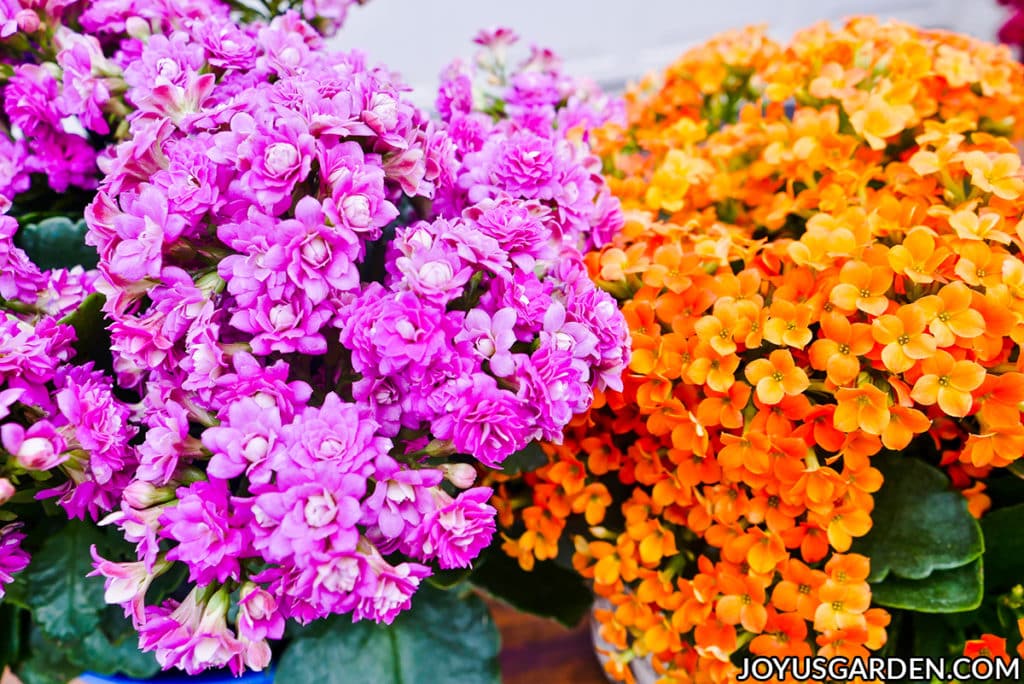
Temperature
Average home temperatures are just fine for Calandivas. Just be sure to keep them out of any cold drafts or away from any heat vents. I’ve grown them indoors here in Tucson in both the summer and the winter.
In Santa Barbara, I grew them on my front porch which was covered from direct sunlight and rain. Growing them outdoors for the summer is fine. Just be sure to keep them out of direct sunlight and don’t let them get too much rain. When it’s starting to get really cold, bring them inside.
Fertilizing
Calandivas are usually grown as short-term blooming plants to enjoy so I’ve never fertilized mine. If you want to give it a fertilizing while it’s blooming, you’re welcome to do that.
Use a balanced houseplant fertilizer with numbers like 10-10-10 or 20-20-20. My friend in San Francisco swears by Maxsea Plant Food for her houseplants which has a formulation of 16-16-16.
I use Eleanor’s vf-11 every couple of months for my houseplants but I haven’t given my Calandivas any. I don’t keep them longer than 2-3 months now. I have 50+ indoor plants to take care of (not to mention the ones in my garden!) and it takes a bit of effort to get them to bloom again.
You want to avoid fertilizing houseplants late in fall or in winter because that’s their time for rest.
Don’t over-fertilize your Calandivas because salts will build-up and will burn the roots. This will show up as brown spots on the leaves. Avoid fertilizing a houseplant that is stressed, ie. bone dry or soaking wet.
Safe for Pets
Like many houseplants, this one is toxic to pets. I always consult the ASPCA website to see how it’s toxic and what effect it’ll have. Hopefully, your pets are like my kitties and they leave plants alone.
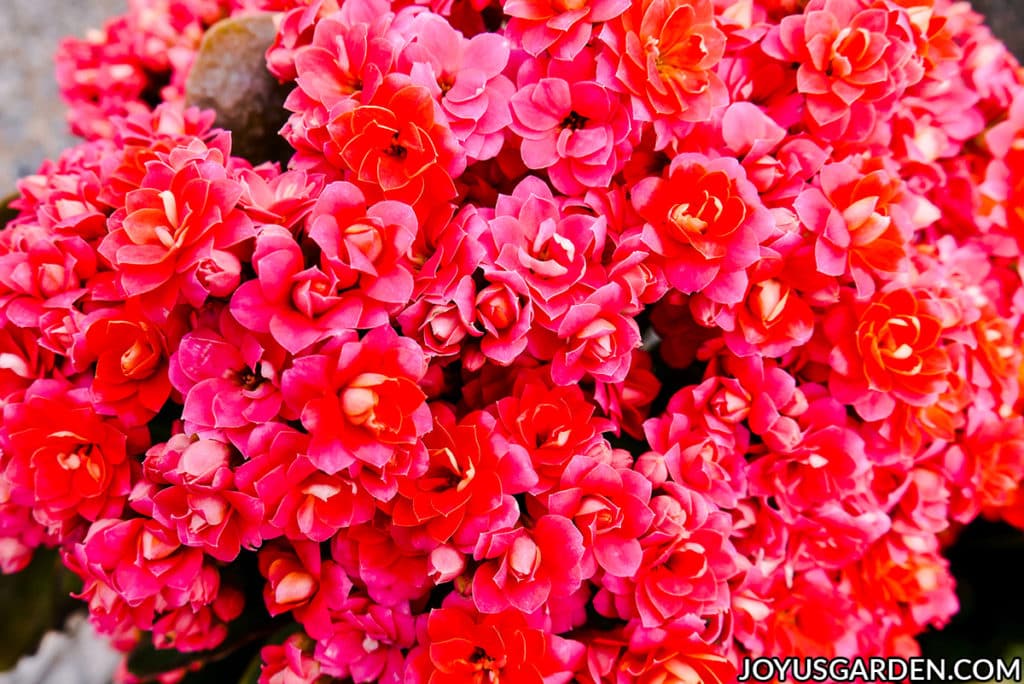
Calandivas are grown for their flowers. They look good for 2-3 months after their bloom and then many people get rid of them. If you choose to keep yours for longer, here are a few more Calandiva care points:
Pinching/Pruning
Once the blooms have died, you can prune off the entire flower stem.
Kalanchoes get leggy over time so you want to pinch the tip growth to discourage that. This keeps them fuller.
I grew many different types of kalanchoes in my garden in Santa Barbara. There are over 200 species found the world over. Many succulents grow long stems and kalanchoes aren’t an exception.
Soil
Calandivas are succulents so they like a mix which is light and well aerated.
If you repot your Calandiva, a suitable soil mix would be: 1/2 succulent & cactus mix & 1/2 potting soil. Using all succulent & cactus mix with a bit of compost mixed in would be fine also. All potting soil works but it’s trickier to keep on the dry side so be sure to mix in some pumice or perlite if you have it.
When I planted my Calandivas to grow outdoors in Santa Barbara, I also mixed in a handful or so of organic compost into each pot and sprinkled the tops with a layer of worm compost.
Check out this DIY recipe for making your own succulent & cactus mix. It’s now the mix I use for all my succulent plantings and love it.
If you’re a beginning gardener, I’ve done a guide to repotting plants that you might find helpful.
Propagating
You can propagate kalanchoes by seed, division or stem cuttings. I’ve never done it by seed but that method takes the longest.
Division can be done if you easily find a way to separate the plant into 2 or 3 separate ones. Some have multiple plants in 1 pot so they won’t be hard at all to divide.
I’ve taken stem cuttings, about 4-5″ long with the bottom leaves few leaves removed, and then healed them off (dry over at the ends) for a week or so. I planted them in succulent & cactus mix and they’ve rooted in about 3 weeks. Be sure not to get the foliage wet while they’re rooting.
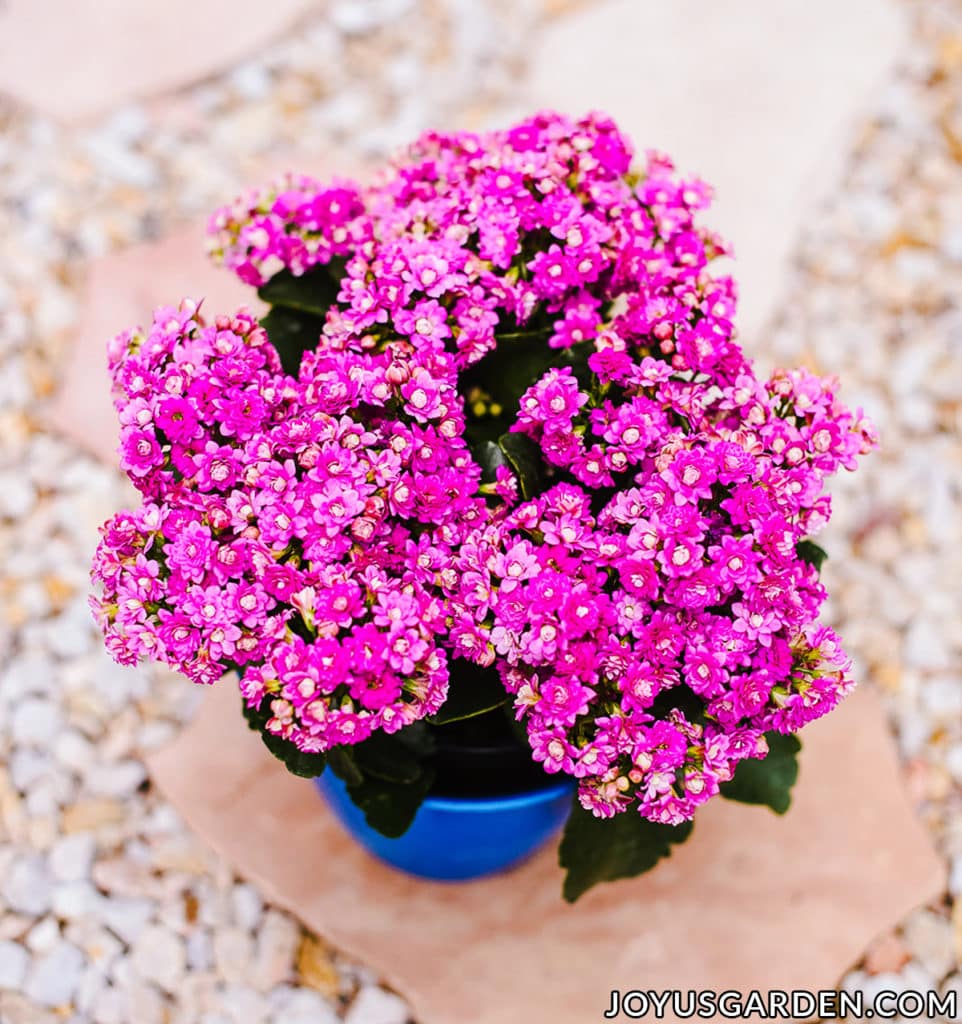
Pests
They are subject to aphids and mealybugs so keep your eyes open for those critters. Catch them before they multiply – houseplant pests can be hard to control if not controlled from the get-go.
Flowering
The happiest part of Calandiva care!
Calandivas have a bloom time of 6-8 weeks. That can vary a bit depending on how open the flowers were when you bought it and how warm your home is. As with any flowering plant, the hotter your home is the faster the flowers will open up and the shorter the period of bloom will be.
Getting them to rebloom is the tricky part. It’s not always easy to do. These plants are photoperiodic. Photoperiodism is common with other short-bloom plants like Poinsettias. This means that they require about 14 hours of darkness to rebloom.
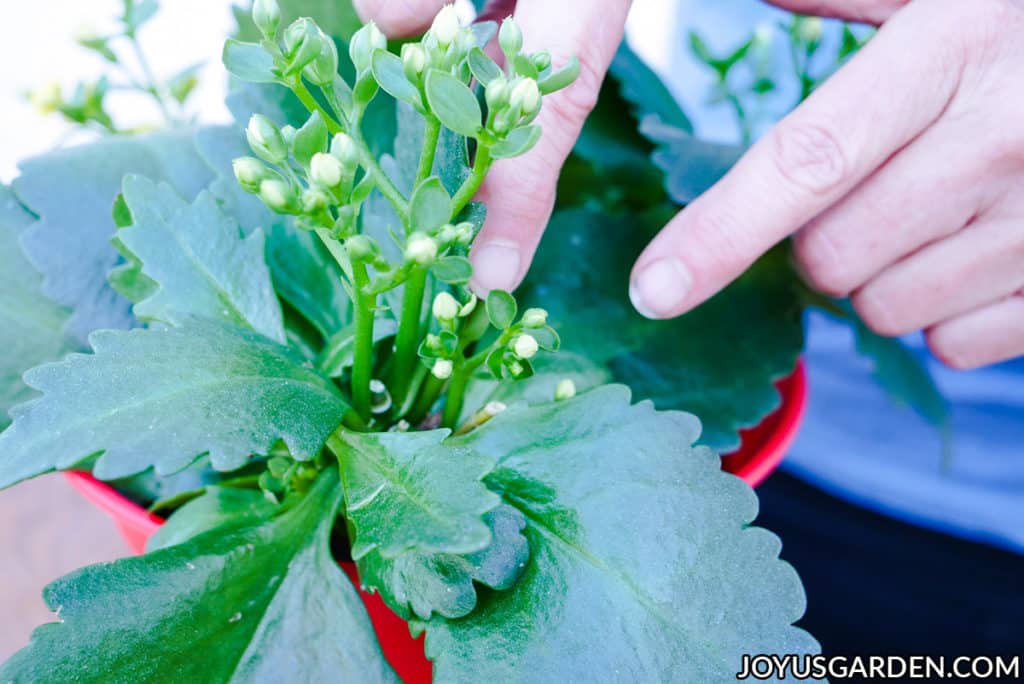
This is a little trick I do to get a 2nd lighter bloom immediately following the initial bloom. I thin out a bit of the foliage even more so those hidden buds can open & show.
That means you’re going to have to put your Calandiva in a closet or room you don’t use at night to back off on the light. You also want to reduce the watering at this time. It takes some effort and the plant gets thin over time which is why most don’t keep a Calandiva as a long term houseplant.
My Calandivas growing outside in Santa Barbara would bloom on their own in spring because they were getting that longer period of darkness naturally. The subsequent rounds of flowers were always a bit smaller than when I initially bought them.
The foliage grows densely so some of the flowers are going to have a hard time emerging. So I’ll remove a few of the leaves to give the buds a little more room to open up.
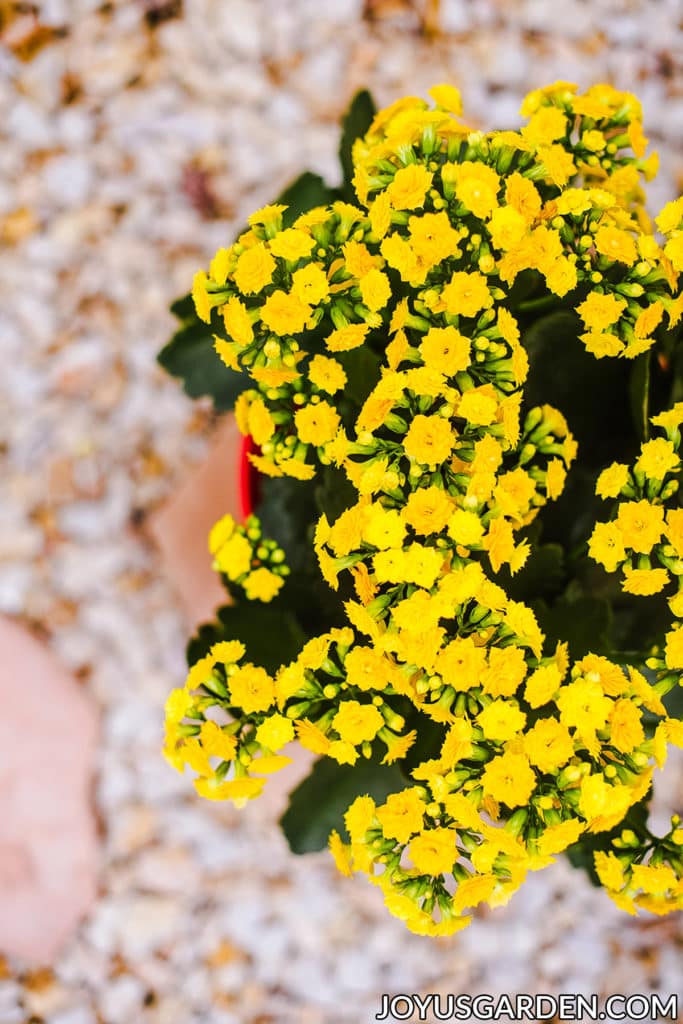
Yes, it is a tender, succulent perennial. Many treat them as annuals so they often thought as such.
The longest I’ve kept 1 for is 3 years, mainly to see how long it would look good. You can see it in this post here (don’t judge – it was written years ago!). The planting has since been taken apart but you can get the idea that the plant is a perennial.
They are now readily available at a lot of different places. I’ve seen them at local nurseries, Trader Joe’s, Lowe’s, and Home Depot. You can find them for sale online also. If you can’t find one locally,
check out here.
Calandivas are commonly sold as indoor plants. In more temperate climates (zones 10a-11b) they grow outdoors. When I lived in Santa Barbara, I grew them in pots on my covered front porch year round.
You could put yours outdoors for the summer but just make sure it’s out of direct sun and don’t let it stay too wet. Bring it inside before the temps dip below 45F.
There are many different species and varieties of Kalanchoes. A Calandiva is a type (or cultivar) of Kalanchoe blossfeldiana.
Calandivas can vary a few inches in size. A typical 6″plant is 18″ tall x 14″ wide. They are considered to be tabletop plants.
Indoors a Calandiva needs bright natural light, a medium to high light location, to keep it looking good. Just make sure it’s not sitting in hot windows.
It’s takes a bit of doing, but if you’re interested, check under “Flowering”.
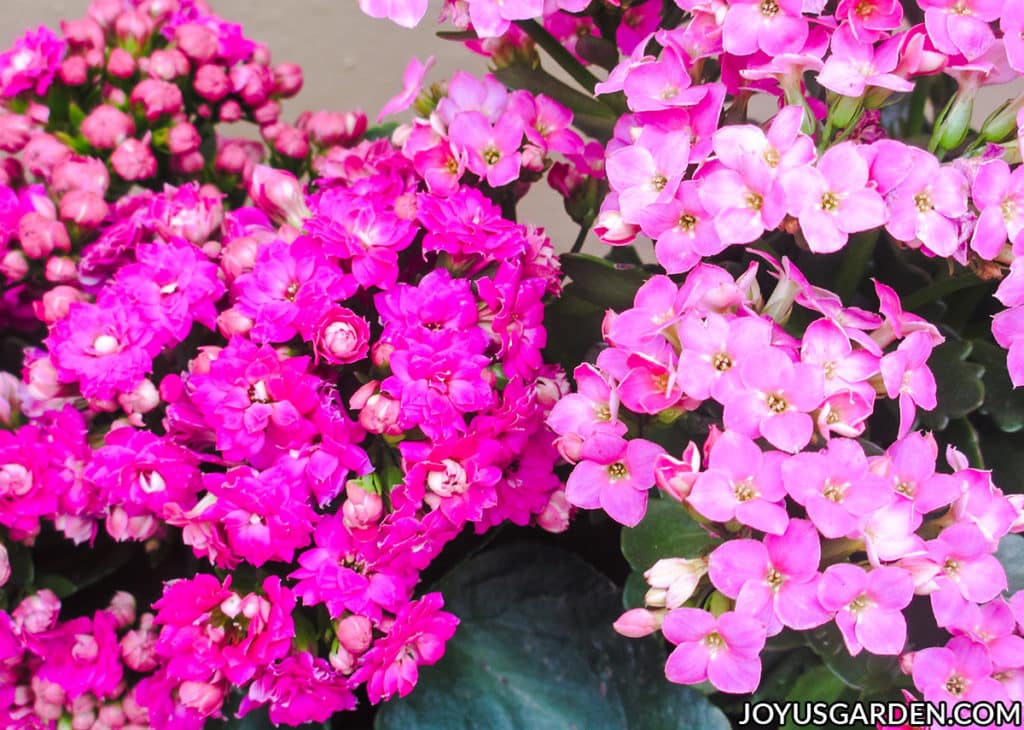
Grandivas were introduced about 10 years later but now they all fall under the Calandiva or Diva brand name. You can read about the history of the brand here in case you’re interested. Sounds like some single flowers are now included under the name too. Regardless, Calandiva care is the same for all of them – single, double, larger foliage, smaller foliage.
The good thing is that you can find these colorful bloomers in quite the color range year-round. Calandiva care is easy, and they’re even easier to enjoy!
Happy gardening,

Here are more plants that you might like to care for too.
This post may contain affiliate links, you can read our policies here.
- About the Author
- Latest Posts
Nell, the founder of Joy Us garden, was born into a gardening family and grew up in Connecticut’s countryside. After living in Boston, New York, San Francisco, & Santa Barbara, she now calls the Arizona desert home. She studied horticulture & garden design, working in the field all her life. Nell is a gardener, designer, blogger, Youtube creator, & author. She’s been gardening for a very long time & wants to share what she’s learned with you.
